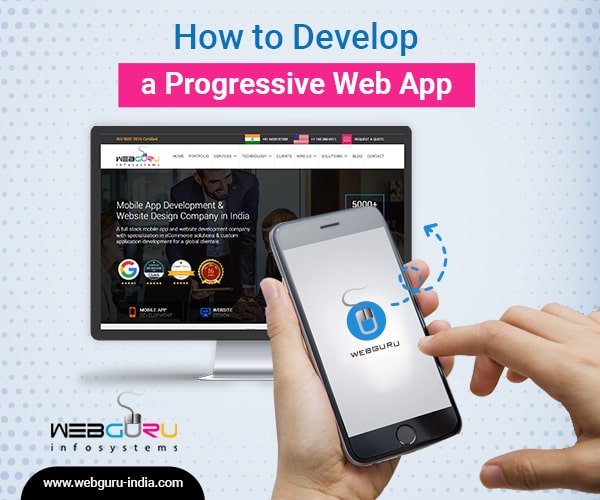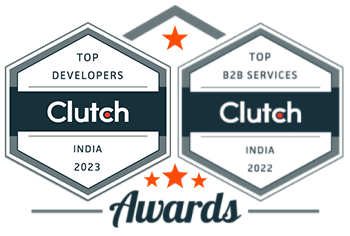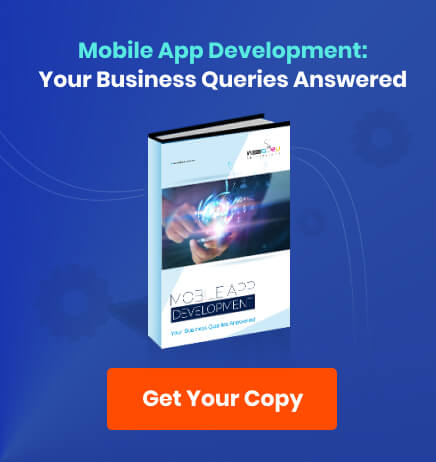Home Blog Web Application Development Checklist for Progressive Web App Development
Checklist for Progressive Web App Development
- 22 Jul / 2021
- 2,981 views

These days, business owners prefer to build Progressive Web Applications (PWAs) to deliver a fast and engaging mobile app-like experience to the users. Such applications greatly support offline usage, push notification, and background synchronization. Today, we will take a closer look at how to create a progressive web app.
While you may need to engage a professional website development company to build a PWA, a detailed understanding of the process and features will help you to set an expectation standard, evaluate the performance of the end result and determine if the service is value-for-money. Without further ado, let’s quickly dive in.
Core Features of Progressive Web Applications
Here, we will check out what to expect from your PWA:
- Responsive – The application fits any device – desktop, mobile, tablet, and offers a seamless user experience.
Connectivity – Thanks to its caching feature, the users can access the app (or some functionalities of the app) with poor or no network connectivity. - Mobile App-Like – The users can add the icon of the PWA on the screen and use it as a mobile application. They need not open the site on the browser every time. For instance, you can add Facebook PWA on your mobile home screen and access it like an app.
- Push Notifications – The applications can send notifications to the users just as a mobile app does. This enhances user engagement.
- Browser Independent – The PWAs can be accessed from any and every browser.
- Linkable – The user can easily share and access the application using the URL. It doesn’t require a time-consuming installation process.
- Safe – A progressive web app is served through TLS (a Service Worker requirement). Thus, it prevents snooping.
- Discoverable – Thanks to W3C Manifests and Service Worker registration, the application is easily identifiable by the search engines.
The Architecture of Progressive Web Applications
Here are the major components of a PWA architecture:
- App shell – The minimal JavaScript, CSS, HTML, and other static resources that provide the basic structure for the web page
- Cache – Two types of caches are present – browser-managed cache and application-managed cache
- Client-Side Rendering (CSR) – It means JavaScript running in the browser produces HTML. It helps to update the screen instantly just when the user clicks
- Server-side Rendering (SSR) – When the browser navigates to a URL and fetches a webpage, it instantly gets back HTML describing the page
- Dynamic Content – It includes various types of data, images, and other resources present in a web app
Progressive Web App Development – The Principles Outlined by Google
PWA is the future of web development. Take a look at some of the key principles outlined by Google for progressive web app development.
- Service Worker for Offline Caching
A service worker is a script that runs in the background, separated from the web page. It responds to various events such as network requests made from a page that it serves. A service worker has a short lifetime – it runs as long as it needs to process an event. It allows you to use the Cache API in order to cache resources. Thus, the users can access a web app with limited or no internet connectivity. You may cache the application shell so that it can properly work offline and populate the content by using JavaScript.
Here are two crucial utilities for reducing the overhead in service worker setup:
-sw-precache – The build-time tool generates a service worker script ideal for precaching a web app shell.
-sw-toolbox – the library provides runtime caching for less frequently used resources
- Add to Home Screen
Chrome on Android supports adding sites on the home screen using web app install banners. The app has to display install prompts. For that, it should:
-Have a valid web app manifest
-Have a registered service worker
-Be served over HTTPS
Various app install banners are available for you to use.
- Web App Manifest
The Manifest for web apps is a JSON file that enables you to control the appearance of the app on the device’s home screen and define how the users can launch it. It allows the app to offer a mobile app-like experience. You may allow them to launch the app in full-screen mode (without displaying a URL bar) and have control over the screen orientation.
For instance, the latest version of Chrome on Android supports controlling theme colour along with Splash screen. It also defines the icons by size and density. The manifest file can be found in Google Chrome samples and Web Starter Kit.
- Push Notification
A PWA can send a notification even when it is not in use. The browser can be closed and the users need not actively use the app to receive push notifications. This feature demands support from the web app manifest and service worker.
The Push API is implemented in Chrome. The Push API and Notification API opens a wide range of possibilities to re-engage with your users.
- Advanced Features
With time, many advanced features are coming to the forefront to build user engaging and highly interactive PWA. For instance, Web Bluetooth allows the users to talk to Bluetooth devices while using your web app. The Background Synchronization feature allows data sync with a server even if the web app is closed.
These features are layered in contemporary applications to enhance user experience.
SEO-Friendliness
Before closing, we want to address a significant issue. PWAs are different from traditional HTML-based websites. This inspired a myth that progressive web apps cannot be indexed by search engines.
It’s time to bust the myth as a PWA can be indexed just like any other web page. That’s why it is important to optimize a PWA for search engines. Being lightweight, PWAs is one step ahead in becoming SEO-friendly. You can engage professional SEO services to ensure that your application ranks high on the search engine.
Following the above-mentioned tips will help you to create a user-friendly progressive web app. If you have more to add to our list, feel free to share your thoughts with us.

Soumi Bhattacharya
Soumi Bhattacharya is an experienced content developer & keen observer of all things digital. Analyzing the latest trends in technology is her forte.
5 comments
Leave a Reply

-
1000+
Happy
Clients -
25+
Countries
Served -
19+
Years of
Trust








Enjoyed your article which turned out to be very informative.
Thanks for sharing this blog with us. From Now we will follow this checklist.
Nice Blog & Informative.
This blog is very nice and helpful!
”Nice you BLog. Keep up the good work.”
“I came across your website. It’s awesome, dude.
“I like your website. No fluff, just helpful info. Great job.”